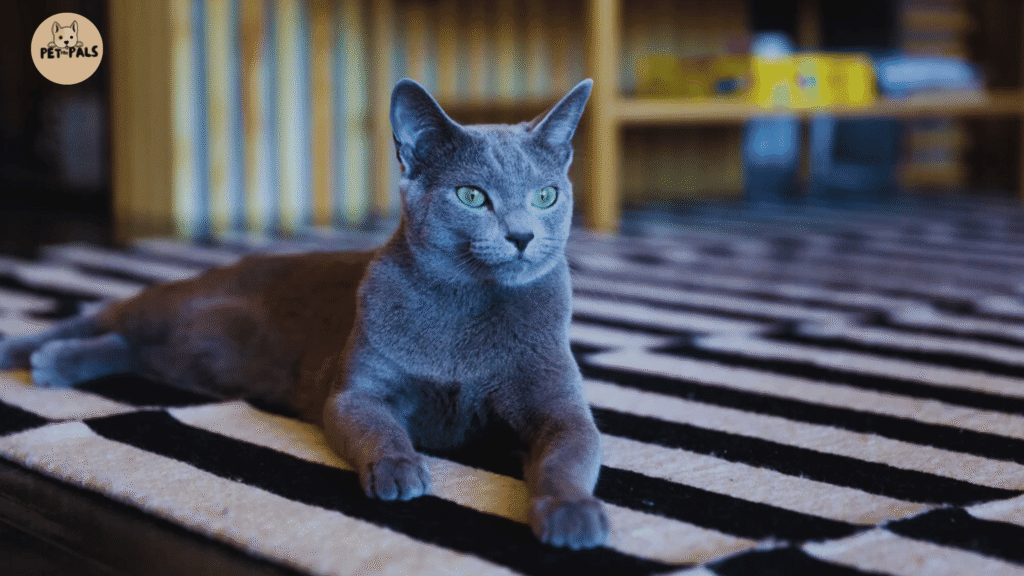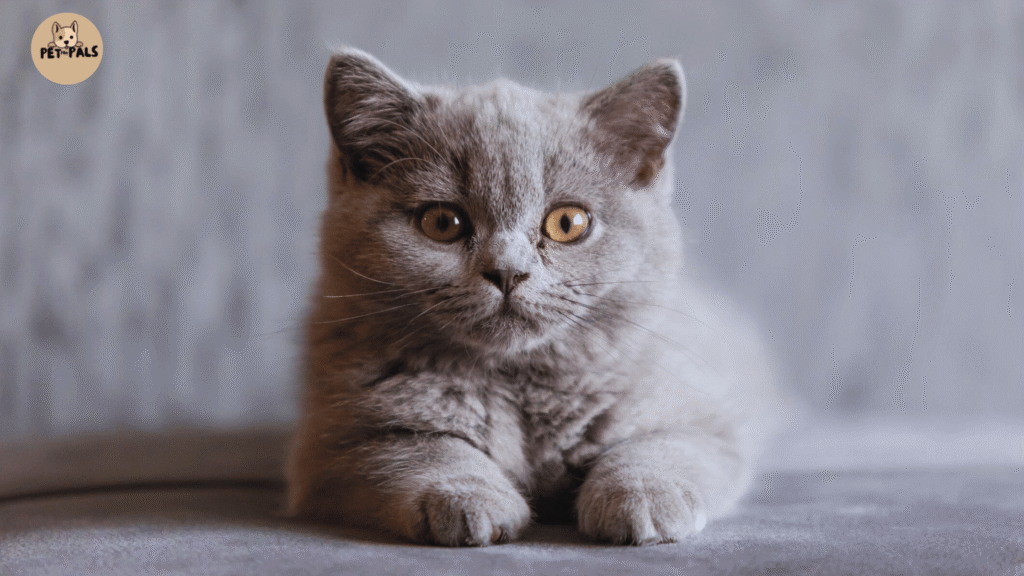Choosing between the Russian Blue vs British Shorthair Cats?
You’re not alone. These two regal Cat breeds are among the most sought-after for cat lovers who crave a mix of charm, calmness, and low-shedding elegance. But which one truly fits your lifestyle?
Whether you’re a busy professional, a first-time pet owner, or someone living in a small apartment, picking the right breed can shape your entire pet-parenting experience. The Russian Blue Cat, with its shimmering silver-blue coat and loyal nature, often appeals to quiet households. Meanwhile, the British Shorthair Cat, known for its plush “teddy bear” looks and laid-back personality, thrives in relaxed family settings.
According to a 2023 survey by the International Cat Association (TICA), over 60% of new cat owners consider temperament and grooming needs as the top two deciding factors when choosing a breed. That’s exactly where these two cats differ, and shine.
In this article, we’ll break down the key differences between the Russian Blue and British Shorthair across categories like personality, grooming, health, cost, and compatibility with kids and other pets. You’ll get real insights, no fluff, so you can confidently decide which feline companion suits you best.
Breed Overview: Russian Blue vs British Shorthair Cats

When comparing Russian Blue vs British Shorthair, it helps to start with a side-by-side look at their basic traits. Each breed has its charm, rooted in history, appearance, and personality.
Russian Blue Cat
Origin: The Russian Blue is believed to have originated in the port city of Arkhangelsk, Russia. These cats were reportedly brought to Europe by sailors in the 1800s and have since gained global admiration for their elegance and grace.
Appearance: This breed is instantly recognizable thanks to its shimmering, short silvery-blue coat and striking emerald green eyes. Their sleek, muscular body and fine bone structure give them a refined, athletic look.
Temperament: Russian Blues are known for their intelligence and reserved nature. While they may seem shy around strangers, they form deep bonds with their owners and often follow them from room to room. These cats thrive in calm, quiet homes and enjoy routine and predictability.
Lifespan: With proper care, Russian Blues can live between 15 to 20 years, making them one of the longest-living cat breeds.
Read More: Russian Blue Cat: Price, Personality, & Owner’s Guide (2025 Update)
British Shorthair Cat
Origin: Hailing from the United Kingdom, the British Shorthair is one of the oldest and most beloved cat breeds. Their ancestry dates back to Roman times, and they were bred for both companionship and rodent control.
Appearance: British Shorthairs are famous for their dense, plush coats (often blue-gray, though many colors exist), chubby cheeks, and wide copper or gold eyes. Their sturdy build and rounded features make them look like cuddly teddy bears.
Temperament: These cats are the definition of calm and collected. British Shorthairs enjoy affection but on their terms. They’re independent and typically don’t demand constant attention, making them great for people with a relaxed lifestyle or a busy schedule.
Lifespan: A healthy British Shorthair lives about 12 to 17 years, although some may live even longer with proper nutrition and care.
Read More: British Shorthair Cat: History, Traits, and Why They’re So Loved
Russian Blue vs British Shorthair Breed Comparison Table
| Feature | Russian Blue | British Shorthair |
|---|---|---|
| Size | Medium | Medium to Large |
| Grooming Needs | Low | Medium |
| Shedding | Minimal | Moderate |
| Temperament | Quiet, loyal | Calm, affectionate |
| Activity Level | Moderate | Low to Moderate |
| Health | Generally robust | Prone to obesity |
| Cost (Kitten Price) | ₹30,000–₹60,000 ($360–$720) | ₹25,000–₹50,000 ($300–$600) |
| Lifespan | 15–20 years | 12–17 years |
Lifestyle Suitability: Who’s Best for Whom?
Choosing the right cat isn’t just about looks; it’s about finding a companion that fits your day-to-day life. Let’s break down how the Russian Blue vs British Shorthair stacks up when it comes to living arrangements, time commitments, and personality compatibility.
Russian Blue: Best for Quiet, Routine-Loving Homes

If you live a calm, structured life and value personal space, the Russian Blue could be your ideal feline partner. They’re perfect for:
- Singles or couples who prefer a quiet home.
- People who work from home or have a predictable schedule.
- Owners looking for a loyal, intelligent cat that forms a strong bond, but isn’t overly clingy.
- Households without frequent guests, as Russian Blues can be shy around strangers.
They adapt well to apartments, as long as there’s space for climbing and quiet corners to retreat to.
British Shorthair: Great for Families and Laid-Back Owners

The British Shorthair is an easygoing, low-demand breed that fits well into a variety of lifestyles. They’re ideal for:
- Families with children they’re patient, gentle, and rarely scratch unless provoked.
- Pet owners who want a companion that’s affectionate but independent.
- Busy professionals who might not be home all day. These cats can entertain themselves and aren’t prone to separation anxiety.
- Multi-pet households, thanks to their tolerant and non-territorial nature.
Think of them like a cuddly roommate they’re happy to hang out nearby, but won’t demand constant attention.
Care & Maintenance Tips
When comparing Russian Blue vs British Shorthair, maintenance is a key factor, especially for first-time cat owners or those with busy schedules. Here’s what you need to know to keep both breeds healthy, happy, and looking their best.
Grooming Needs

Russian Blue: Thanks to their short, dense, double-layered coat, Russian Blues are fairly low-maintenance. A quick weekly brushing is usually enough to remove loose hairs and keep their coat shiny and clean. They rarely shed excessively and are known for being excellent self-groomers.
British Shorthair: While their plush coat looks like velvet, it tends to shed more, especially in spring and fall. Brush them at least twice a week during shedding seasons to prevent matting and hairballs. Outside of shedding season, once a week is usually sufficient.
Use a rubber grooming mitt or soft-bristle brush to make grooming feel like a massage, especially helpful for the laid-back British Shorthair.
Diet Tips
Russian Blue: These cats do well on a high-protein diet, with quality wet or dry food formulated for active indoor cats. They’re naturally lean, but still prone to weight gain if overfed.
British Shorthair: This breed needs strict weight control. Their stocky build can hide fat easily, making obesity a common issue. Choose weight-management formulas and monitor portion sizes closely.
Avoid free-feeding and stick to scheduled mealtimes for both breeds to prevent overeating.
Exercise & Enrichment
Russian Blue: These intelligent cats enjoy playtime and mental stimulation. Puzzle feeders, interactive toys, and short bursts of play (chase-the-feather, laser tag, etc.) help keep them mentally sharp and physically fit.
British Shorthair: Known for their laid-back attitude, they often need a bit more encouragement. Use toys that mimic prey or offer low platforms they can jump onto. Don’t expect high-energy zoomies,but do encourage gentle activity to keep their weight in check.
Conclusion & Recommendation
Choosing between the Russian Blue vs British Shorthair ultimately comes down to your personality, lifestyle, and what kind of feline relationship you’re looking for.
Quick Summary
| Your Preference | Best Match |
|---|---|
| Prefer quiet loyalty and elegance? | Russian Blue |
| Prefer chill vibes and cuddly calm? | British Shorthair |
Both breeds are wonderful companions, but they offer different experiences. The Russian Blue is perfect if you want a smart, reserved cat that quietly follows you around and enjoys a stable routine. The British Shorthair, on the other hand, brings a comforting presence with its easygoing, plushy personality and low-drama charm.
Still Unsure?
Take our “Perfect Cat Match” quiz (link placeholder) or better yet, visit a local breeder or shelter to meet both breeds in person. Sometimes, the right cat chooses you.
Whichever you pick, you’re in for a life filled with purrs, headbutts, and unforgettable moments.
FAQs: Russian Blue vs British Shorthair
Which cat is better for families Russian Blue or British Shorthair?
The British Shorthair is better for families with kids, thanks to its calm and tolerant nature. Russian Blues can be loving, but they usually prefer quieter homes and may hide from loud or busy environments.
What are the grooming needs of Russian Blue vs British Shorthair cats?
Russian Blues require minimal grooming, usually just a weekly brush. British Shorthairs need more frequent grooming, especially during shedding seasons, to manage their dense double coat.
Which is more independent, British Shorthair or Russian Blue?
British Shorthairs are more independent, often content lounging alone for hours. Russian Blues are emotionally attached to their humans and may follow you from room to room, but still appreciate personal space.
Is Russian Blue or British Shorthair more suitable for apartment living?
Both breeds adapt well to apartment life, but Russian Blues are especially suited for small, quiet spaces, as they dislike loud noise and unpredictable environments.
What are the personality differences between Russian Blue and British Shorthair cats?
The Russian Blue is intelligent, reserved, and loyal, forming strong bonds with one or two people. The British Shorthair is laid-back, sociable, and affectionate, making it a great choice for multi-member households.

